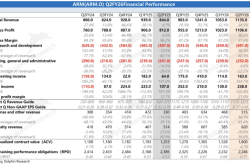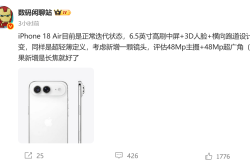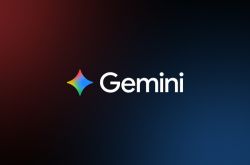2024 AI Year-end Review | From Technology to Industry, Three Outstanding Questions Remain
![]() 12/31 2024
12/31 2024
![]() 604
604

Image Source: Visual China
Blue Whale News, December 30 (Reporter Zhu Junxi)
Since the release of ChatGPT two years ago, the AI wave has continued to surge. This year, NVIDIA, the "shovel seller," emerged as the biggest beneficiary, briefly becoming the company with the highest global market value. With the narrative of Apple Intelligence, Apple's market value approached the historic threshold of $4 trillion at the end of the year. Additionally, OpenAI, the industry leader, soared to become the world's third-largest unicorn with a valuation exceeding $100 billion.
Globally, technology companies are either shouting the slogan of "All in AI" or continuing to expand the role of AI in their strategic layouts. In public events and company financial reports, AI has become an indispensable theme. Beyond the technology industry, more companies are integrating AI into their businesses. Individuals are becoming accustomed to opening AI conversation assistants in their daily lives to communicate diverse and whimsical ideas with artificial intelligence.
In 2024, AI technology advanced, the industry accelerated its reshuffle, and several outstanding questions remained.
How to Break Through the Bottleneck of the Scaling Law?
When reviewing why ChatGPT successfully sparked the AI boom, a consensus is that it was driven by the synergy of data, algorithms, and computing power. In 2020, the OpenAI research team proposed that as the model size, training datasets, and computational resources increase, model performance also improves. This is the Scaling Law, the key principle guiding model pre-training, which has fueled the leap of large models in recent years.
However, since the second half of this year, debates about whether the Scaling Law has hit a wall and whether marginal benefits are diminishing have intensified. Firstly, OpenAI's next-generation large model, GPT-5, which has been delayed, was rumored to have encountered obstacles in training. Despite significant investments, model progress has slowed, failing to achieve the same leap as from GPT-3.5 to GPT-4. Subsequently, companies such as Google and Anthropic also faced similar dilemmas, forcing them to postpone the release of their flagship models and seek new technical routes.
Instead of GPT-5, OpenAI released the inference model o1 in September, followed by its successor, the o3 model, three months later. This series of models adopts a naming convention different from the GPT sequence and is generally regarded as the beginning of a new paradigm. Inference models allocate more computing resources to the inference phase rather than the pre-training phase, enhancing model performance by increasing reinforcement learning and thinking time.
In the AI industry's view, inference models are expected to overcome the slowdown in pre-training scaling. Yang Zhilin, the founder of Dark Side of the Moon, a domestic large model unicorn, publicly stated that the significance of the o1 model lies in raising the upper limit of AI. When the original Scaling Law encounters a bottleneck due to the depletion of high-quality internet data, it at least proves that through the combination of reinforcement learning and large language models, further scaling is possible, "which is entirely possible to be a very important start."
As a result, domestic and international large model players have also embarked on the path of shifting to the inference paradigm and continuing to catch up with OpenAI. By the end of 2024, Google had launched its first inference model, Gemini 2.0 Flash Thinking. Its chief scientist, Jeff Dean, stated that the model has been trained to enhance reasoning abilities through the thought process, "achieving encouraging results when increasing the computation time for reasoning!"
China now has inference models comparable to o1, including the R1-Lite preview version from DeepSeek, a subsidiary of Quantum Black, and the QwQ model from Alibaba Tongyi. Recently, Dark Side of the Moon has successively released the mathematical model k0-math and the upgraded visual thinking model k1, outperforming o1 in specific abilities such as mathematics, physics, and chemistry. Additionally, companies like ByteDance have revealed that they are deploying inference models, and it is expected that more such models will be launched next year.
Although companies show a consensus on the evolution direction of inference models, their current usage scenarios are still extremely limited. When answering user questions, inference models require more thinking time. When OpenAI researchers released the o1 model, they admitted that the o1 model is not always better than GPT-4. For many tasks that do not require reasoning, sometimes waiting for an o1 response is less efficient than quickly obtaining a GPT-4 response.
Compared to traditional large language models, inference models have lower development costs but significantly increased inference costs during use. OpenAI passed some of these costs on to users, incorporating access to the full version of the o1 model into the newly launched paid subscription ChatGPT Pro, with pricing increased from $20/month for the basic package to $200/month. While the o3 model scored much higher than o1 in benchmark tests, completing a single task in high-compute mode incurs a steep cost of several thousand dollars.
Currently, for ordinary users, the utility of inference models is not yet apparent. The Silicon Valley tech media The Information once quoted insiders as saying that only a small fraction of ChatGPT users regularly use the o1-preview. Such models seem to be more beneficial to the research community, which is also OpenAI's primary target audience.
Will AI Super Apps with Commercial Visions Arrive?
Compared to the booming market a year ago, this year's AI boom has begun to experience periodic cooling. As technology giants continue to advocate for substantial investments in AI and pursue long-term return strategies, doubts about the AI bubble theory are also spreading. A more practical issue is that large model vendors, bearing high research and development costs, must also find viable business paths to survive.
The trend of large models shifting towards implementation is directly reflected in the changing promotional rhetoric of various companies. Rather than simply evaluating models based on their performance, parameters, and benchmark scores, more emphasis is placed on showcasing application scenarios.
To seize the early market, a "price war" erupted. In May this year, DeepSeek and another startup, Zhipu AI, were the first to reduce the invocation prices of their models. Subsequently, ByteDance made the loudest splash when it launched its Doubao large model, with its main model priced 99.3% cheaper than the industry average. Following this, Alibaba Cloud, Baidu, and Tencent Cloud, which had previously been cautious, also announced price reductions, shifting large models from cent-based pricing to milli-based pricing.
In this round of price wars, most of the aggressive moves were made by domestic cloud vendors, with few AI startups participating. Cloud vendors hope to attract more customers to use their cloud services by showcasing reduced model pricing. The short-term losses from price reductions can be subsidized by cloud service benefits, further expanding their public cloud market share.
Data shows that such customer acquisition methods are indeed effective. According to the latest disclosures by various companies, the daily average token usage of ByteDance's Doubao general model has exceeded 4 trillion, a 33-fold increase from when it was first released seven months ago, and Baidu's Wenxin large model has an average daily invocation volume of 1.5 billion. Baidu's founder, Li Yanhong, once stated that if the API invocation volume could increase tenfold to 2 billion within a year, it would indicate that the large model has "succeeded."
Driven by cost reductions and model advancements, AI applications are also emerging. ChatGPT-style AI conversation assistants have become a "standard" for many companies, including ByteDance's Doubao, Dark Side of the Moon's Kimi, and Tencent's Yuanbao. However, according to a previous 36Kr report, ByteDance's management believes that even Doubao, which is in the domestic first tier, still does not perform ideally in key indicators such as conversation rounds and duration. Therefore, it is judged that AI conversation products may only be an "intermediate state" of AI products, prompting ByteDance to prioritize its AI creation platform Jimeng.
Agents that can autonomously perceive the environment, execute actions, and achieve set goals have become the next application trend bet by many AI companies. When Google launched its latest Gemini 2.0 large model, it stated that it was built for the age of agents. This year, Li Yanhong has repeatedly emphasized that Baidu regards agents as the most important strategic direction, believing that this mainstream form of AI application is on the verge of an explosion. Zhipu AI has launched multiple autonomous agents since October, capable of simulating human operations on mobile phones and computers, demonstrating the greater application potential of agents.
Competition in the AI search sector is also heating up. Not only are giants such as Google, Baidu, and Alibaba actively leveraging AI to transform traditional search engines, but emerging startups like OpenAI and Dark Side of the Moon are also integrating AI search functions into their products. Recently, Xiaohongshu quietly launched a new AI search product called "Diandian" and initiated a small-scale internal test within the app. An AI search developer once told Blue Whale News that search is a high-frequency scenario for users every day and has become a must-win battleground for AI companies.
As AI application directions diverge in vertical fields, and more new companies flood into the application layer, we may see more diverse AI applications next year. Sectors such as programming, emotional companionship, and smart hardware are showing robust growth.
The market is still waiting for the arrival of a super app like WeChat in the AI era. Regarding this, industry leaders have varying attitudes. Li Yanhong said that a super app is not as capable as being super capable. Zhipu CEO Zhang Peng stated that the emergence of a super app is not entirely driven by technology but also considers whether the market and users are ready, demand exploration, and a bit of luck. "Don't just look at this conclusion too early, maintain a bit of patience."
Who Will Remain at the Table: Big Companies or Startups?
As the year-end approaches, financing news in the AI large model sector has once again become active. One of the "Six Little Dragons," the startup Jieyue Xingchen, recently announced the completion of a B-round financing of hundreds of millions of dollars, with investment from Shanghai state-owned assets and Tencent. In the middle of this month, Zhipu AI received another round of financing of 3 billion yuan. Tongwei Intelligence, which is also affiliated with Tsinghua University and focuses on edge AI, completed a new round of financing of hundreds of millions of yuan, and AI video startup Aishi Technology received nearly 300 million yuan in A+ round financing.
Compared to the first half of this year, the financing progress of large model companies slowed down significantly in the second half. In February this year, Alibaba invested heavily in large model startups, hoping to emulate the Microsoft-OpenAI model by paying part of the investment in the form of computing power. Among them, Alibaba invested about $800 million in Dark Side of the Moon, acquiring a 36% stake. The over $1 billion financing completed by Dark Side of the Moon remains the largest single financing record in the domestic AI field to date. Less than half a month later, Alibaba led a $600 million financing round in another startup, MiniMax, pushing its valuation to $2.5 billion.
Including investments made earlier in the year, Alibaba and Tencent have assembled China's top five large model startups, including ZeroOne, Zhipu AI, Baichuan Intelligence, Dark Side of the Moon, and MiniMax. The big moves by internet giants like Alibaba and Tencent have once again sparked FOMO (fear of missing out) sentiment towards large models, with financial investors such as Gao Rong Venture Capital and Hillhouse Capital also participating in some unicorn investments.
Blue Whale News combed through the statistics of the venture capital data service provider IT Juzi. As of December 30, a total of 483 investment events were recorded in the domestic AI industry in 2024, with a total investment amount of approximately 65.5 billion yuan, down 18.8% and 6.1% respectively from the previous year. Among them, the number of financing events in the second half of this year was lower than that in the first half, but the financing amount was higher.
From the perspective of the industrial chain, the AIGC sector, including the large model layer, accounted for only 24% of the total number of financing events but absorbed 57% of the financing amount. Massive investments flowed to leading large model startups such as Dark Side of the Moon, Zhipu AI, and Baichuan Intelligence. In terms of the AI application layer, the number of financing events accounted for more than half of the total, but the amount was far less than that of the model layer.
Regarding AI investments, Zhu Xiaohu, managing partner of GSR Ventures, perhaps represents a distinctive viewpoint: he favors the application track over large models. Zhu believes that basic services will ultimately be provided by cloud vendors, and startups will see abundant opportunities in the AIGC application end. This year, he has repeatedly stated that "the best outcome for AI startups is to be acquired by big companies" and that "there will be no independent large model companies left in five years."
In the fast-paced foreign AI industry, a surge of startups has already been "acquired." This year in March, Microsoft shelled out $650 million to procure software licenses from Inflection AI, a former competitor of OpenAI, and hired most of its co-founders and employees. Similarly, in June, Amazon struck a deal with AI startup Adept, and in October, Google spent $2.7 billion on Character.AI, with the latter announcing its shift from large model R&D to product improvement.
The market for leading base models has further consolidated around a handful of companies, including Google, Meta, xAI (backed by Musk), OpenAI (supported by Microsoft), and Anthropic (supported by Amazon).
In China, ByteDance, a major player that has opted for organic growth rather than heavy investments, has shone brightly this year. Despite a slower start in the large model arena, its consumer-oriented product Doubao has outperformed competitors in user engagement. According to QuestMobile data, as of October, Doubao boasted 48.39 million monthly active users, significantly exceeding Kimi Intelligent Assistant's 16.5 million and Wenxiaoyan's 11.79 million. Known as an "App factory" in the digital age, ByteDance has also launched over a dozen AI applications spanning painting, learning, video, and even hardware products.
On the B-end, Volcano Engine, ByteDance's cloud service platform that opens up its AI technology tools, has been aggressive. Although Volcano's President Tan Dai did not disclose specific figures on how large models have fueled public cloud revenue, he confirmed the number of customers utilizing these models and their usage intensity. Tan Dai once remarked, "From cloud-native to AI cloud-native, Volcano aims to be a leader in this domain."
Earlier, Kunlun Wanwei's founder Zhou Yahui posted on social media, "I stated at the beginning of the year that ByteDance's AI strategy for 2023 was unsuccessful, but this doesn't diminish ByteDance's stellar performance in its 2024 AI strategy. This aligns with my expectations for this organization's rapid iteration capability (its ability to outperform competitors)."
As big companies continue to expand their reach, AI unicorns are making clearer choices regarding technology and application segmentation. Dark Side of the Moon and Jieyue Xingchen concentrate on existing To C productivity tools, while Zhipu AI continues to explore B-end commercialization models. ZeroOne prioritizes To B in China and leads with To C overseas. Additionally, MiniMax's current strengths lie in its overseas strategy and multimodal capabilities, while Baichuan Intelligence clearly focuses on the medical sector.
With this year's funding, these startups have at least secured a seat at the table. As we embark on 2025, the AI battle between big companies and startups will intensify, potentially leading to a new industry reshuffle. Who will advance further on the AI path remains the next phase's intriguing question.








